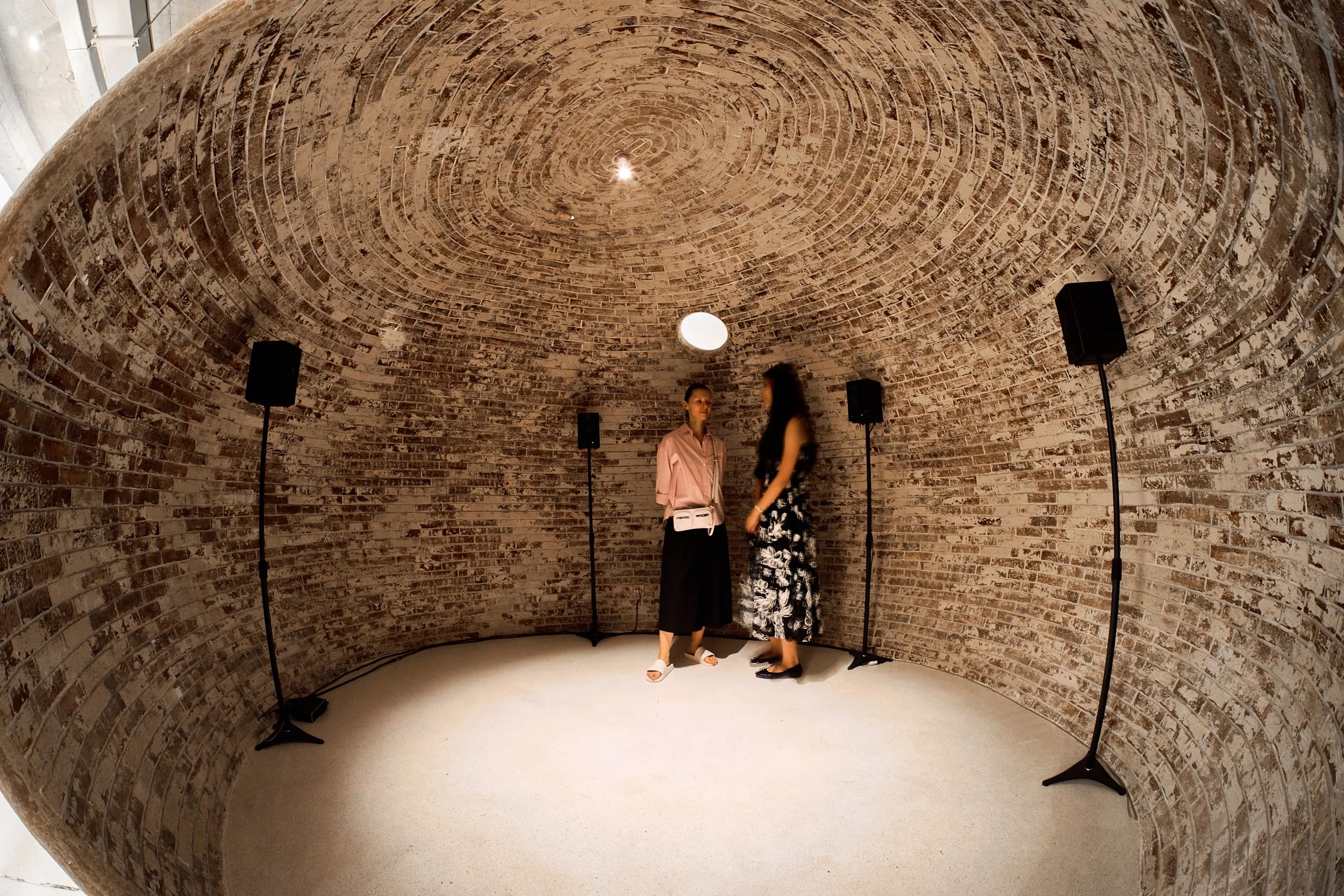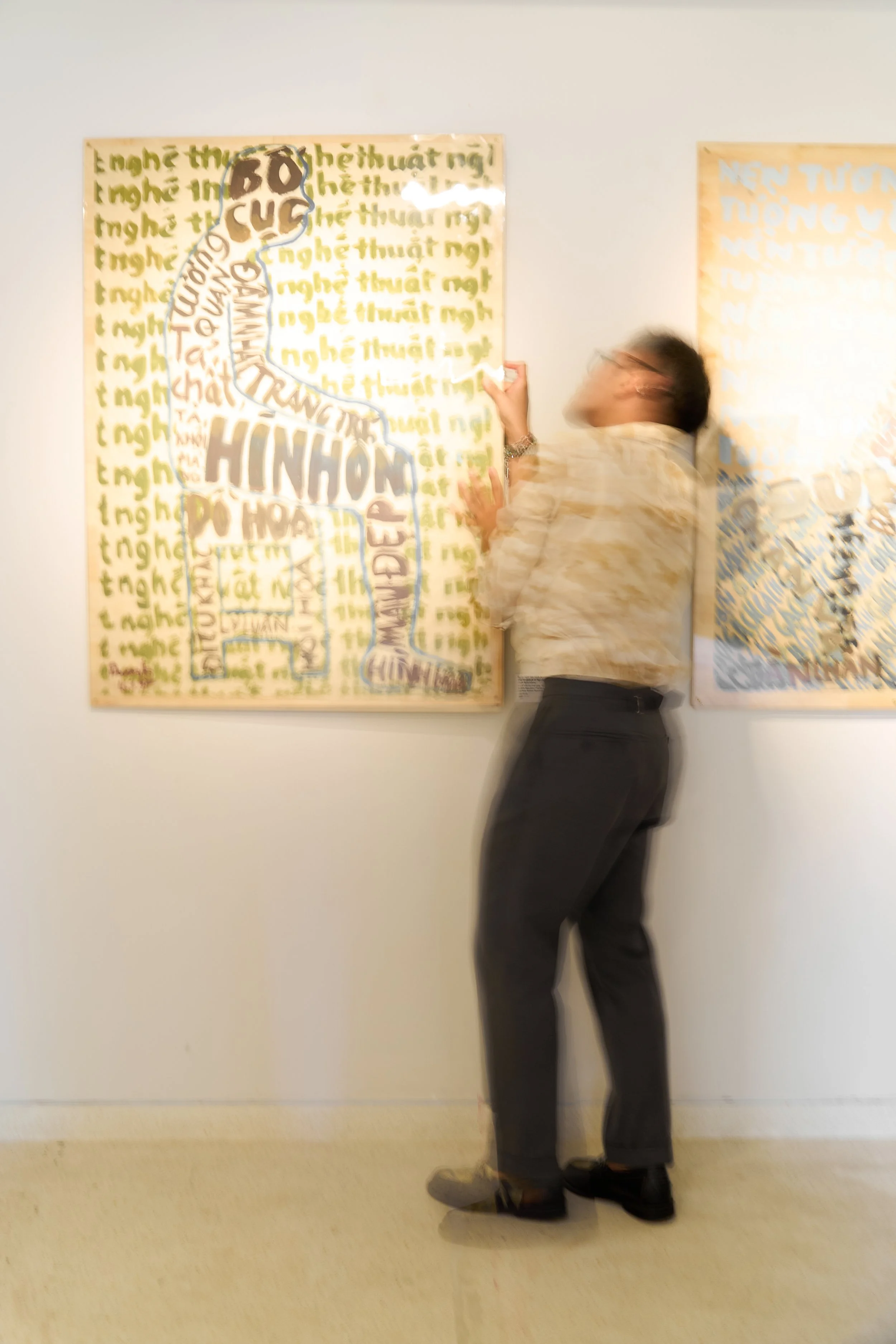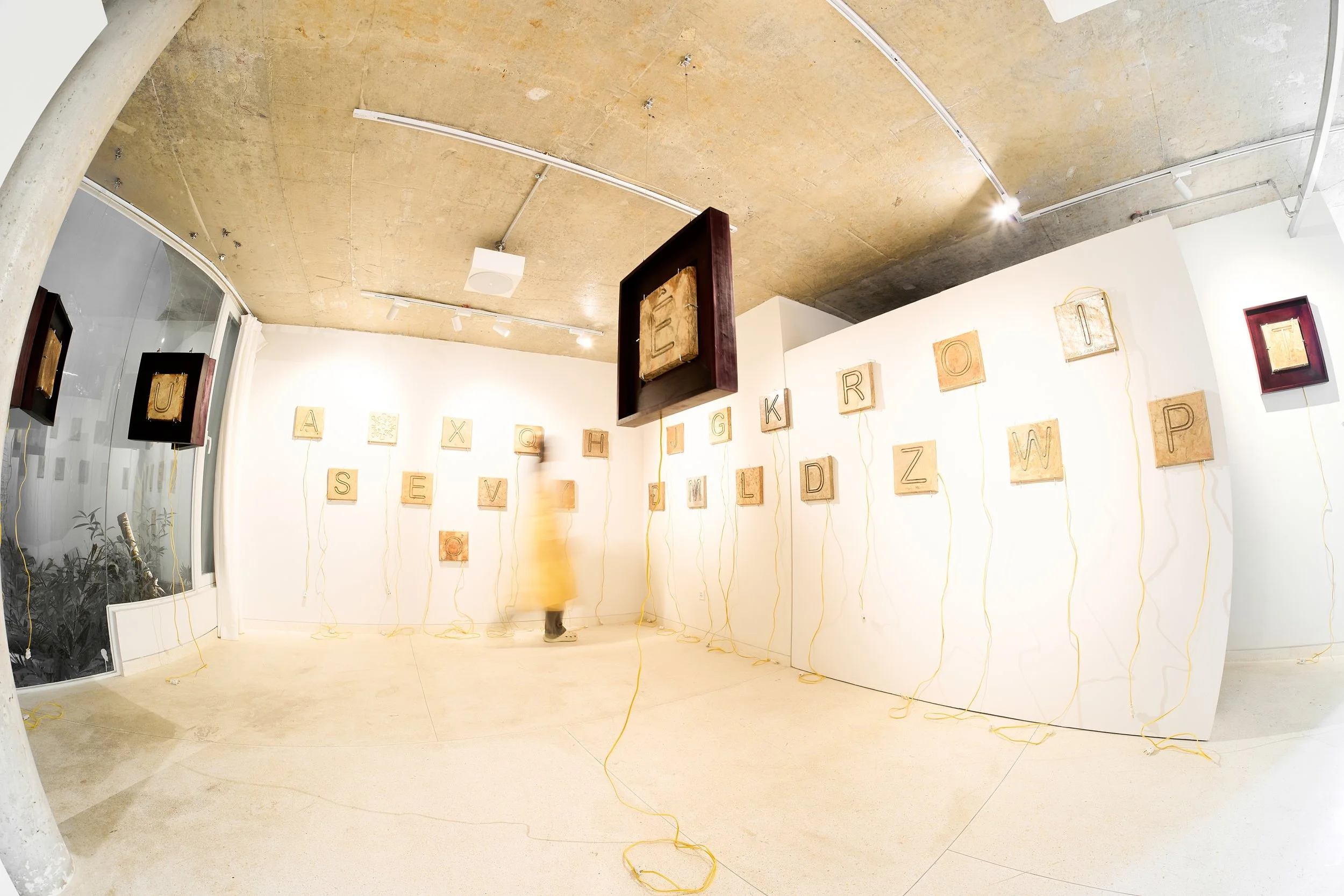Language and the Right of Refusal
Review of ‘The Speaking Space’
With roughly 97 million speakers worldwide, Vietnamese is a language in formation. Though its roots began over two millennia ago, this Austroasiatic language had borrowed much of its grammatical, lexical, and written form from Classical Chinese by the beginning of the 10th century. However, it would not be until the early 20th century, under French colonial rule that Quốc ngữ, the Latin-based Vietnamese alphabet, would be widely adopted as the colony’s recognisable official script.
Promoted as a tool to reduce illiteracy, Quốc ngữ also enabled colonial authorities to surveil for sedition, showing how language functions as both expression and control. Language, in this sense, is both a conduit for expression and a mechanism for control, its grammar functioning as both a political and a cultural code, shaping what can be articulated and what must remain unsaid.
At Gate Gate Gallery (pronounced ga-té ga-té) in Ho Chi Minh City, the exhibition The Speaking Space turns this dual nature of language, namely its potential for liberation and its susceptibility to regulation, into both subject and strategy. Curated by Sofia Thiệu D’Amico, the show takes its title from an interview¹ with scholar and film maker, Trinh T. Minh–ha. In it, Minh–ha reflects on the possibility of speaking without objectification: a form of address that neither seizes nor reduces its object, but instead holds it in relation and context. The exhibition asks what it means to create a space in which language, in all its material and affective registers, resists transparency.
The six artists approach language not as transparent communication but as unstable, residual, fragmented, embodied, withheld, or volatile. Together, their works echo Minh–ha’s provocation: speech or inscription can be intimate without being possessive, relational without being reducible. This shared strategy gives The Speaking Space its coherence.
Danh Võ, 2.2.1861, 2009, ink on paper, 29.6 x 21cm. Image courtesy of Huỳnh Triệu Vy and Nguyễn Hoài Thương.
Danh Võ’s 2.2.1861 (2009) introduces an act of inscription in which the inscriber does not comprehend the language of the text. Võ’s father, Phung Võ, meticulously copied the last letter of a French missionary executed in Vietnam, written in French, a language the writer does not speak. The intimacy of a letter, traditionally a medium of direct address, is inverted. The act of writing is emptied of semantic content for the writer, yet retains its form, its physical trace. It is a language both present and absent, immediate yet inaccessible.
Jacqueline Hoàng Nguyễn, For an Epidemic Resistance, 2009/2025, four-channel sound installation with RCA cables and external audio interface, dimensions variable. Image courtesy of Huỳnh Triệu Vy and Nguyễn Hoài Thương.
Similarly, Jacqueline Hoàng Nguyễn’s For An Epidemic Resistance (2009/2025) uses sound to destabilise meaning. Four speakers emit an unrelenting chorus of decontextualised laughter, laughter stripped from its usual context of joy. The result is disarming and disquieting, a phonetic residue that hovers between intelligible and inarticulable. Like Võ’s illegible inscription, Nguyễn’s laughter refuses translation, positioning opacity as its own resistant force.
Phạm Ngọc Dương, Ngôn ngữ tạo hình 1 & Ngôn ngữ tạo hình 2, 1997, tempera on paper, 108 x 79cm. Image courtesy of Huỳnh Triệu Vy and Nguyễn Hoài Thương.
Phạm Ngọc Dương’s diptych Ngôn ngữ tạo hình 1 & 2 (1997) extends this logic to the body. Male and female forms are filled with textual markers that define and disrupt their contours. Script becomes flesh, yet the figures remain fragmentary, composites of the visible and the concealed. Together, Võ, Nguyễn, and Dương foreground language as residue and fragment, circulating without fully seizing its subject.
Hương Ngô, Up Against the State, 2017-2023, invisible ink on sulfite pulp paper mounted directly on wall, 53.3 x 78.7cm. Image courtesy of Huỳnh Triệu Vy and Nguyễn Hoài Thương.
If the first cluster of works show language as emptied or fragmented, the next stage withholds language altogether. In Hương Ngô’s Up Against the State (2017-2023), invisible ink stages the bureaucratic gaze as absence: the viewer confronts blankness, a message obscured unless mediated by the correct conditions. Ngô’s deliberate misdirection reframes language as a site of resistance, echoing how Quốc ngữ was used to police sedition. She insists that not all meaning is for everyone, and that not all communication is intended to be received.
Trương Tân’s untitled paper drawings turn language toward the body’s more illicit registers. Phallic motifs emerge alongside fragmented phrases such as “what don’t they need you?” Figures appear with eyes covered or half-averted, suggesting that sight, like language, can mislead, constrict, or dictate what is permissible to apprehend.
Ưu Đàm Trần Nguyễn, THÍCH (Words Can Burn series), 2020, ceramic plates on heating fixture, 30 x 30cm. Image courtesy of Huỳnh Triệu Vy and Nguyễn Hoài Thương.
Lastly, in Ưu Đàm Trần Nguyễn’s ceramic alphabet series, THÍCH (Words Can Burn) (2020), each of the 36 letters of the Vietnamese alphabet is rendered as an individual sculptural form, embedded with electric coils. Some letters hang suspended in space; others are tethered to wooden frames or positioned tightly on the wall. In one corner, a white platform invites visitors to step up, activating the heating elements and causing the coils to glow, underscoring the power and volatility of language to burn.
Across Võ, Nguyễn, and Dương’s works, a recurring strategy emerges: language appears not as transparent communication but as residue, fragment, or inscription on the body. Whether emptied of meaning in Danh Võ’s letter, stripped of context in Jacqueline Hoàng Nguyễn’s sound installation, or inscribed onto flesh in Phạm Ngọc Dương’s paintings, these works show how language circulates without fully seizing its subject. Each suggests that speech or writing can be intimate without being possessive—forms of address that gesture toward relation without total comprehension. This is what Minh–ha means by “speaking without objectification”: to seize an object is to fix it, to render it transparent and consumable.
The implications are twofold. First, for the viewer, these works demand a mode of engagement that resists the drive to decode or extract. Meaning must be lived with, not solved. Second, for Vietnamese contemporary art in the global circuit, this refusal becomes especially charged. The international art market often asks Southeast Asian practices to make themselves “legible,” or to translate into familiar visual codes or narratives that can circulate abroad. By insisting on opacity, and on speech that resists seizure, The Speaking Space offers a different stance, where illegibility is not deficit but strategy. It is a way of holding culture in relation without flattening it into a fetishised object. In other words, these are not just objects.
Gate Gate Gallery is a new space, still forming its own identity, and exhibitions such as this one, with a sharp conceptual scope, signals a commitment to critical engagement rather than mere market alignment. By foregrounding the politics of grammar, The Speaking Space offers a reminder that plurality in language, more broadly understood, can be as vital as intimacy, and that legibility is not always a virtue. Sometimes, the most generative spaces are those in which meaning resists capture, where language refuses to give itself entirely away. In an art world increasingly shaped by the demand for instant comprehension, such gestures of the right of refusal are a welcome sight.
Zooming out, as Vietnam emerges as one of Southeast Asia’s next contemporary art hot spots, it is imperative that it avoids the trap of the unknowable as an exotic quality, and instead situates illegibility as an active, critical stance, which this exhibition manages to do.
The Speaking Place is on view at Gate Gate Gallery from 1 August to 2 September 2025.
Note:
1. Nancy N. Chen, "Speaking Nearby: A Conversation with Trinh T. Minh–ha,” Visual Anthropology Review, March 1992, pg. 85.





